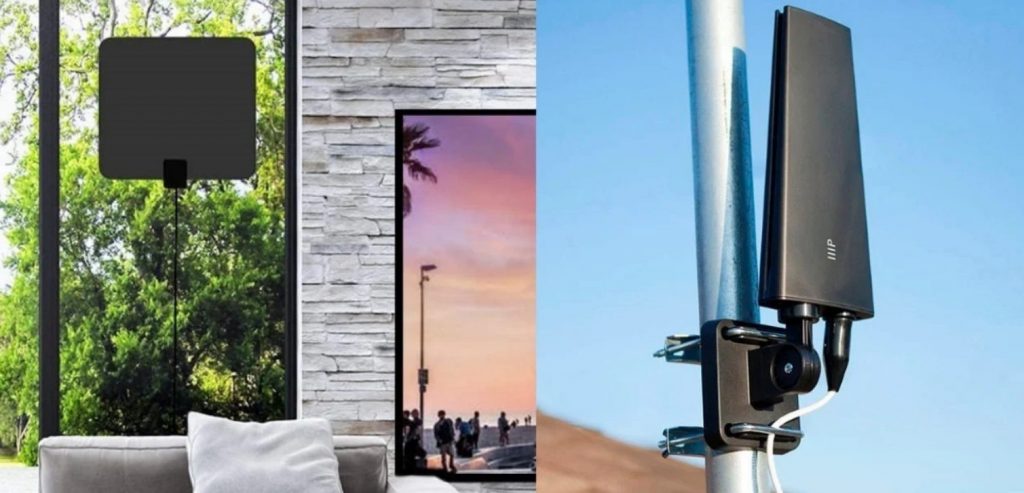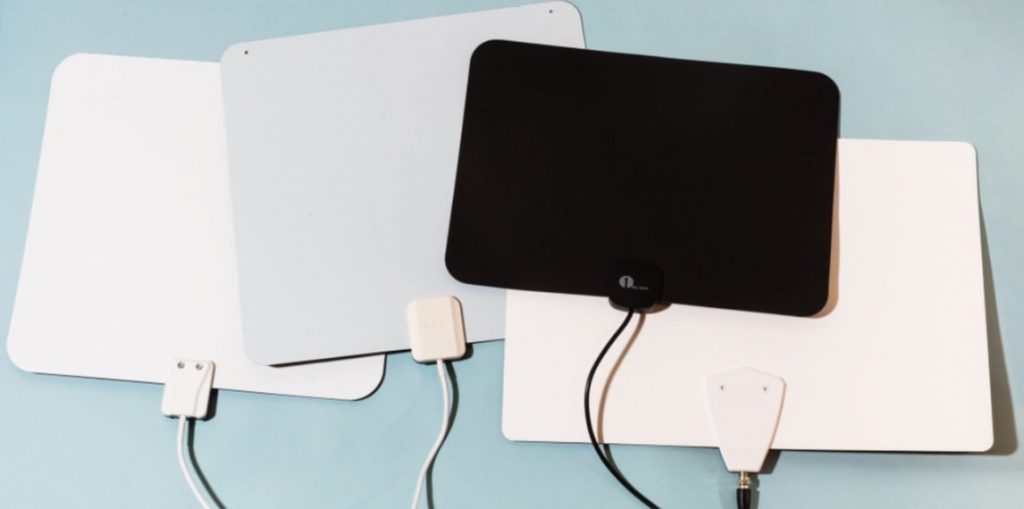TV antennas are designed to receive broadcasting signals and send those vibrations to your screen. We can no longer imagine our lives without a TV. The TV has become an important part of our lives. The whole world depends on it because it is the most common entertainment at house.
New TVs come in various sizes. Old TVs used to consist of a black box with a screen and an antenna. The latest TVs come with smart features but an antenna is compulsory for these TVs too. Otherwise, you can use the internet to stream your favorite TV shows.
Table of Contents
How Do TV Antennas Work?
It is just like a signal bouncing from one place to another, to reach your home. There are TV stations and towers placed at different places for signals to bounce from one tower to another.
One tower receives the signal while the other tower sends it. The receiving tower takes the radio waves being transmitted from one tower to the other and again bounces it to the antenna placed at your house. The antenna makes it possible for you to watch the TV. The working of a TV antenna is a lot more complicated to understand. Because it contains a lot of things like waves, frequencies, conversion, etc.
Do Types Of TV Antennas Affect The Signal?
Yes. The types of TV antennas affect the signal. Some TV Antennas are long in length and some are short. The short TV Antennas gain few waves as compared to the long TV Antennas. Long Antennas have advantages over short antennas.
- The signal strength of longer TV Antennas is much stronger than the shorter ones.
- They somehow keep track of gaining the signals even when the weather is cloudy or rainy.
- The range of these antennas is longer as well.
- The picture and sound quality are perfect because of these long antennas.
Digital TV Antennas VS Streaming Cable:
In the battle of Digital VS Streaming TV Antennas, the winner is Digital TV Antenna. Because of the signals, it transmits. Digital TV Antennas gain the analog signals (Radio Waves/Signals) and convert them into digital signals which are better than analog signals. It helps in the improvement of the picture quality as well as the sound quality.
Getting Started With Digital TV Antenna:
There are two types of digital TV antenna models: Indoor and Outdoor. For the Indoor model, all you need is to have a capable TV to receive digital signals, a digital TV Antenna, and a coaxial cable.

If you don’t get the coaxial cable with your TV Antenna, you can easily pick one from an electronics store or superstore near you. All you need to do is, place the TV (remember, it is capable of receiving the digital signals) and attach the cable to the TV and the Digital TV Antenna. You can now enjoy higher-quality video and audio. You can even enjoy the 4K resolution with some models.
The Direction Of The Antenna:
The direction of the Antennas matters. In the past, the horizontal Antennas were used. They needed to be in the direction of the station where the signals used to come from. But as time passes, new technology is being introduced.
Today, horizontal Antennas have been replaced by circular Antennas which need not be placed in the direction of the station to gain the signals flawlessly. They can gain signals by placing them in any direction.
HDTV Antenna:
People prefer to watch the highest quality possible to fully enjoy the transmission. For higher quality, an enormous amount of data also needs to be transferred from one place to another rapidly and securely. The HDTV providers compress the data and transfer it. The local HDTV providers uncompress the data and transmit it to the HDTV Antenna so that your antenna receives the best quality.

A conventional Antenna receives the radio signals from the station (analog) while an HDTV Antenna receives the electromagnetic signals from the station. HDTV Antenna has the capability of providing better signals, hence it has the capability to provide better picture and sound quality.
Conclusion:
I’m pretty sure that you’ve understood “How do TV Antennas work?” and you’re able to distinguish between conventional TV Antennas and Digitial, high-quality, antennas.
So, the complete summary of this guide reveals that digital antennas are capable of handling high power and can provide better signals and better picture and sound quality because digital transmission is much more powerful than conventional analog transmission.
